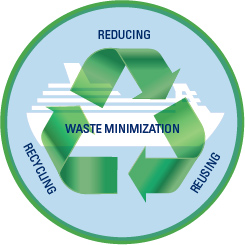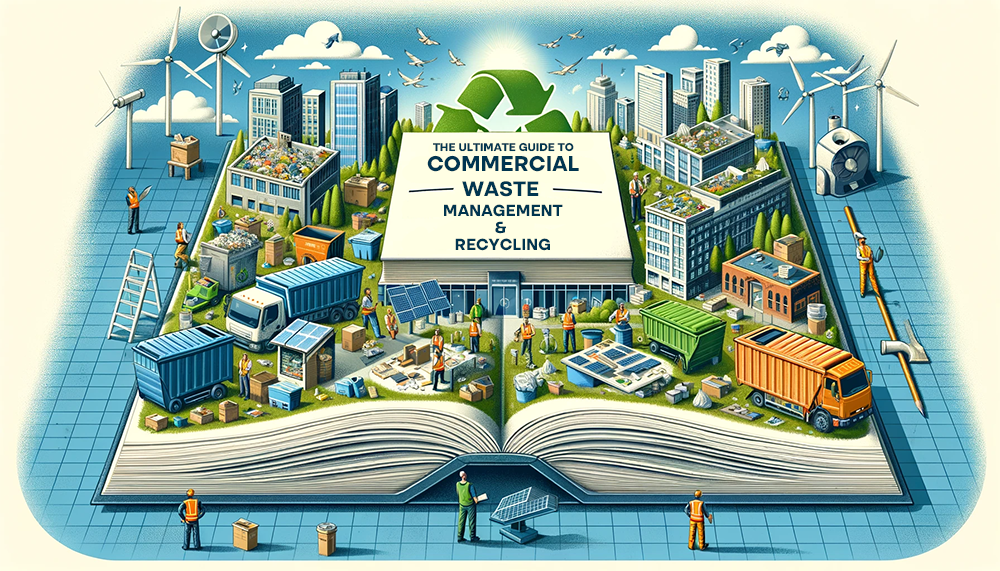Exploring Different Sorts Of Waste in Modern Waste Management Equipment
The contemporary landscape of waste management involves browsing a complicated range of waste types, each calling for specialized handling and disposal approaches to alleviate environmental impacts. Municipal strong waste, hazardous waste, digital waste, and organic waste each present distinctive obstacles and possibilities for source recovery.
Metropolitan Solid Waste
Local solid waste, usually described as home garbage or garbage, encompasses a selection of discarded products produced by domestic, industrial, and institutional sources within a town. This waste stream generally consists of products such as packaging, food scraps, lawn trimmings, paper, plastics, textiles, and disposed of home goods. The monitoring of community strong waste is a vital element of urban planning and public wellness, requiring efficient collection, transport, and disposal systems.
Efficient waste monitoring systems are developed to decrease ecological impact while optimizing source healing. This typically includes a mix of approaches consisting of landfilling, recycling, and composting. Reusing programs target materials like paper, glass, metals, and certain plastics, diverting them from garbage dumps and reestablishing them into the production cycle. Composting natural waste, such as food scraps and yard trimmings, not only decreases landfill use but additionally generates valuable soil changes.
Towns need to also deal with the logistical and economic obstacles related to waste management. Implementing pay-as-you-throw systems, enhancing public understanding, and buying modern technology can substantially boost waste diversion rates. By integrating these methods, communities can foster sustainable areas, minimize greenhouse gas discharges, and conserve natural deposits.
Hazardous Waste

Effective contaminated materials monitoring entails a number of essential steps: recognition, disposal, segregation, and therapy. Identification requires the classification of waste based upon its hazardous properties. Segregation guarantees that dangerous materials are saved independently from non-hazardous waste to avoid cross-contamination. Therapy techniques, such as chemical neutralization, incineration, and stablizing, are utilized to lower the toxicity, quantity, or movement of the waste. Disposal alternatives, including safe and secure landfills and below ground storage, are selected to make certain long-lasting control.
Regulative frameworks, such as the Source Preservation and Recovery Act (RCRA) in the USA, supply guidelines and standards for contaminated materials management. Adherence to these guidelines, combined with improvements in waste treatment innovations, is vital in minimizing the risks connected with contaminated materials.
Electronic Waste
Electronic waste, frequently referred to as e-waste, stands for a swiftly expanding difficulty in waste administration systems around the world. This sort of waste incorporates thrown out electronic gadgets and tools such as smartphones, computer systems, tvs, and various other digital devices. The rapid speed of technological innovation, paired with lowering product life-spans and consumer need for the current tools, has significantly increased the volume of e-waste produced annually.
E-waste is especially bothersome as a result of its complex composition, typically including unsafe compounds like lead, see here now cadmium, and mercury, which posture substantial environmental and health risks if not appropriately managed. Conversely, e-waste additionally consists of valuable materials such as copper, gold, and silver, which can be recuperated and reused. The twin nature of e-waste-- both harmful and useful-- necessitates customized handling, reusing, and disposal procedures.
Reliable e-waste administration click reference involves rigid regulative structures, robust collection systems, and progressed recycling modern technologies. Public awareness and participation are crucial, as incorrect disposal techniques, such as illegal unloading and casual recycling, aggravate environmental contamination and carcinogen. Improving e-waste monitoring techniques is essential for mitigating environmental impact and recuperating beneficial sources in an increasingly electronic globe.

Organic Waste
Organic waste, making up kitchen scraps, lawn trimmings, and farming residues, stands for a significant portion of the worldwide waste stream. This kind of waste is eco-friendly, indicating it can be broken down by microbes right into less complex organic compounds. Despite its potential for all-natural decomposition, incorrect monitoring of natural waste can result in adverse ecological influences, including the emission of greenhouse gases such as methane, which add to climate adjustment.
Efficient management of organic waste is important for decreasing these ecological effects (recycling lives services). Composting is an extensively embraced technique, transforming natural waste right into nutrient-rich compost that can enhance soil health and agricultural productivity. In addition, anaerobic food digestion is an arising technology that converts natural waste into biogas, an eco-friendly energy source, and digestate, which can be used as plant food
Municipalities and waste management entities must implement robust organic waste collection and therapy programs to make best use of the benefits of these procedures. Public education and learning campaigns can likewise play an essential role in motivating houses and organizations to separate natural waste from various other kinds of waste. By focusing on the monitoring of natural waste, cultures can minimize garbage continue reading this dump use, reduced greenhouse gas discharges, and produce useful by-products for farming use.

Ingenious Waste Management
In the realm of waste administration, ingenious techniques are changing just how cultures manage their refuse, going for sustainability and performance. These innovations incorporate a series of technologies and practices that enhance recycling prices, reduce land fill dependence, and reduced ecological influence. One famous technology is the execution of clever waste containers outfitted with sensing units that check fill degrees and enhance collection routes. This not only minimizes fuel consumption however additionally lessens greenhouse gas discharges.
One more noteworthy advancement is the adoption of waste-to-energy (WtE) technologies. By transforming non-recyclable waste right into useful power through procedures such as incineration and anaerobic food digestion, WtE reduces landfill burden and provides a renewable energy source. Advancements in chemical recycling permit for the malfunction of complicated plastics into their original monomers, allowing the creation of brand-new, top quality plastic items.
Additionally, the circular economic situation version is acquiring grip, emphasizing the style of items and systems that prioritize reusability and resource performance. This holistic method urges industries to lessen waste generation from the start. Through these ingenious methods, modern waste administration systems are not just dealing with the immediate difficulties of waste disposal however likewise paving the means for a much more lasting future.
Verdict
An extensive understanding of local strong waste, contaminated materials, electronic waste, and organic waste, coupled with the application of ingenious waste monitoring solutions, is critical for reducing environmental effects. Incorporating technologies such as smart waste bins and waste-to-energy systems can boost performance and sustainability. Effective waste management approaches not only foster resource healing yet also advertise public understanding and participation, eventually adding to the advancement of a circular economic situation.
The modern landscape of waste monitoring entails browsing an intricate selection of waste kinds, each calling for specialized handling and disposal approaches to minimize ecological influences. Local strong waste, unsafe waste, digital waste, and natural waste each existing distinct challenges and possibilities for source healing.Electronic waste, commonly referred to as e-waste, stands for a quickly growing difficulty in waste administration systems worldwide. Through these innovative approaches, modern-day waste administration systems are not only dealing with the instant obstacles of waste disposal however also paving the means for a much more lasting future.
A comprehensive understanding of metropolitan solid waste, hazardous waste, digital waste, and organic waste, paired with the application of innovative waste monitoring services, is crucial for reducing environmental effects. (recycling lives services)
Comments on “Recycling Lives Services: Leading the Way in Accountable Recycling”